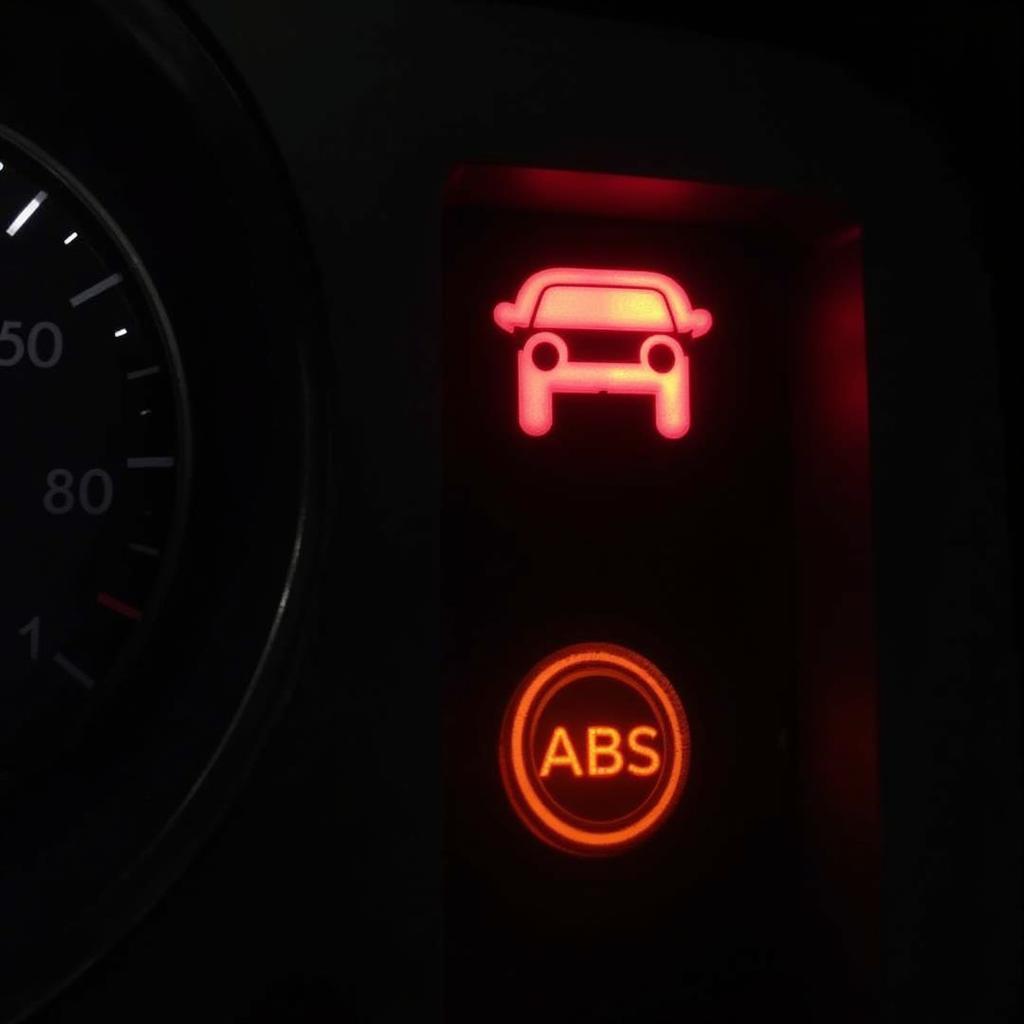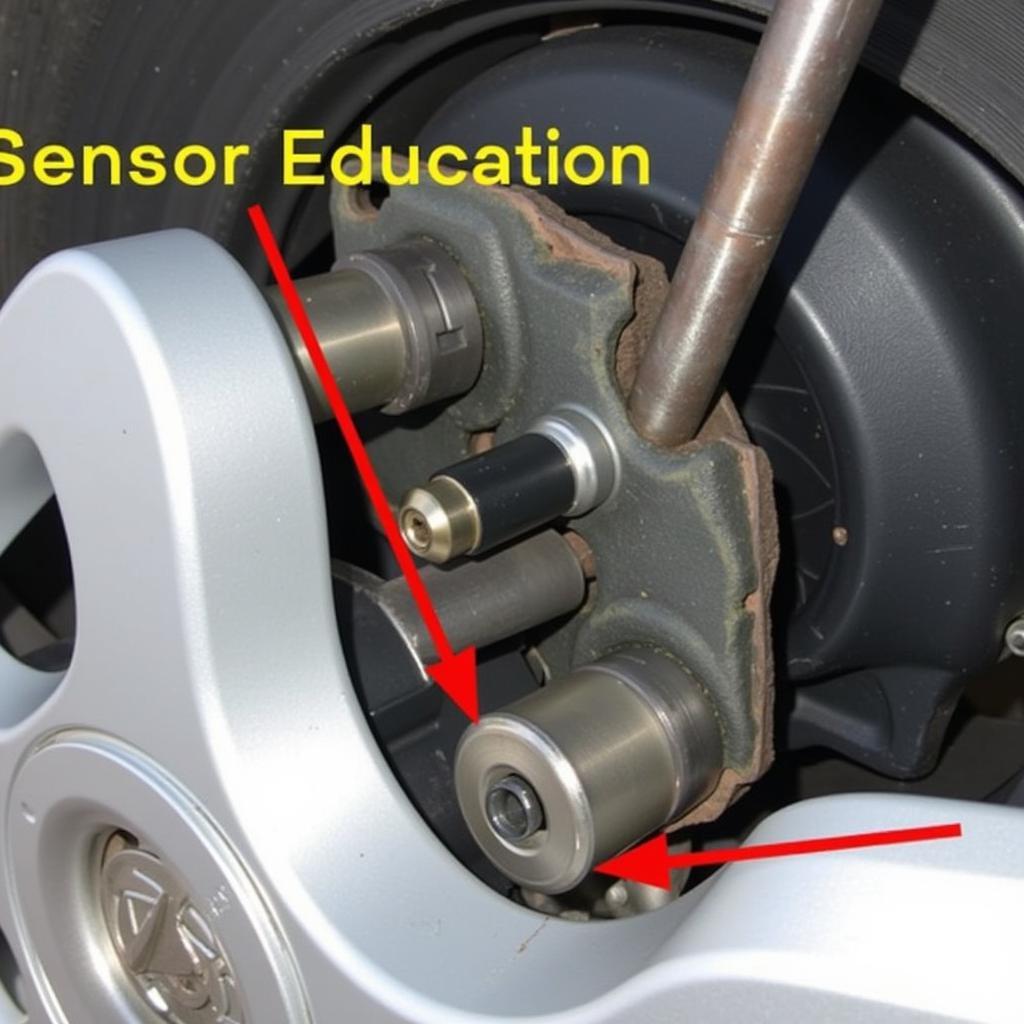When the red brake warning lamp is on and an amber light accompanies it, it signals a potential issue with your vehicle’s braking system that requires immediate attention. This dual warning can be unsettling, but understanding the potential causes and solutions can help you address the problem effectively.
The brake warning light system is designed to alert you to problems affecting your vehicle’s ability to stop safely. While a single red brake warning light often indicates low brake fluid, the presence of an additional amber light typically points to a more complex issue involving the Anti-lock Braking System (ABS) or Electronic Stability Control (ESC). Ignoring these warnings could compromise your safety and lead to costly repairs. Let’s explore the possible reasons behind these warning lights and how to diagnose and fix them. You can find more information in this article about the brake warning lamp.
Understanding the Brake Warning Lights
The red brake warning light is a universal symbol indicating a critical issue with the conventional braking system, such as low brake fluid or a malfunctioning pressure differential switch. The amber light, often the ABS or ESC light, indicates a problem with these electronic safety systems. These systems help maintain control of your vehicle during hard braking or slippery conditions. Seeing both lights illuminate simultaneously suggests a potential interaction between these systems.
What if the amber light is blinking? A flashing amber ABS light could indicate a temporary malfunction, while a continuous amber light usually suggests a more persistent issue. Knowing the difference can help narrow down the potential causes. For example, you might want to check out which valve illuminates the brake warning lamp.
Diagnosing the Problem: Red Brake Warning Lamp is On and the Amber
Diagnosing the issue accurately is crucial for effective repair. Here’s a step-by-step guide:
- Check the brake fluid level: The most common cause of a red brake warning light is low brake fluid. Locate the brake fluid reservoir under the hood and check the level. If it’s low, add the correct type of brake fluid as specified in your owner’s manual.
- Inspect for leaks: If the fluid level is consistently low, there may be a leak in the braking system. Look for signs of leakage around the brake lines, calipers, and wheel cylinders.
- Check the brake pads: Worn brake pads can also trigger the warning light. Inspect the brake pads for wear and tear. If they are thin, replace them.
- Scan for trouble codes: Use an OBD-II scanner to retrieve diagnostic trouble codes (DTCs) from the vehicle’s computer. These codes can pinpoint the specific area of the ABS or ESC system that is malfunctioning.
- Check the ABS sensors: The ABS sensors monitor wheel speed. If a sensor is dirty, damaged, or malfunctioning, it can trigger the amber warning light. Clean or replace the sensors as necessary.
 Red and Amber Brake Lights Illuminated on a Car Dashboard
Red and Amber Brake Lights Illuminated on a Car Dashboard
Common Causes and Solutions
Several factors can contribute to both the red and amber brake warning lights illuminating. Here are some common scenarios:
- Low brake fluid and a faulty ABS sensor: Low brake fluid can sometimes cause erratic signals from the ABS sensors, triggering the amber light along with the red light. Addressing the low fluid level might resolve both issues.
- Worn brake pads and ABS activation: Worn brake pads can trigger the ABS to activate more frequently, potentially causing a malfunction and illuminating the amber light. Replacing the brake pads should resolve this issue.
- Faulty ABS module: A malfunctioning ABS module can cause a variety of problems, including illuminating both warning lights. This usually requires professional diagnosis and repair or replacement of the module. You might also want to learn more about the scenario when the brake warning lamp is on and the amber abs.
“In my experience, a combination of low brake fluid and a failing ABS sensor is a common culprit,” says David Miller, Senior Automotive Diagnostic Technician at Miller’s Auto Repair. “Addressing the fluid leak and replacing the sensor often solves the problem.”
 Mechanic Checking Brake Fluid Level
Mechanic Checking Brake Fluid Level
Preventing Future Issues
Regular maintenance is key to preventing brake system problems. Follow these tips:
- Regularly check brake fluid levels: Monitor the brake fluid level and top it off as needed.
- Inspect brake pads and rotors during routine maintenance: This will allow you to identify wear and tear before it becomes a problem.
- Have your brake system inspected by a qualified mechanic annually: A professional inspection can identify potential issues early on.
“Preventative maintenance is always the best approach,” says Sarah Chen, Lead Technician at Chen Automotive. “Regular inspections can save you time, money, and headaches in the long run.” For instance, knowing about the 2007 jeep cherokee brake warning light can be helpful.
 Location of ABS Sensor on a Car Wheel
Location of ABS Sensor on a Car Wheel
Conclusion
Seeing both the red brake warning lamp is on and the amber light can be concerning, but understanding the potential causes empowers you to address the issue promptly. By following the diagnostic steps outlined above, you can identify the problem and take appropriate action. Remember, regular maintenance and prompt attention to warning lights are crucial for ensuring your vehicle’s safety and preventing costly repairs down the road. Check out more about the Audi A3 brake pad warning light.
